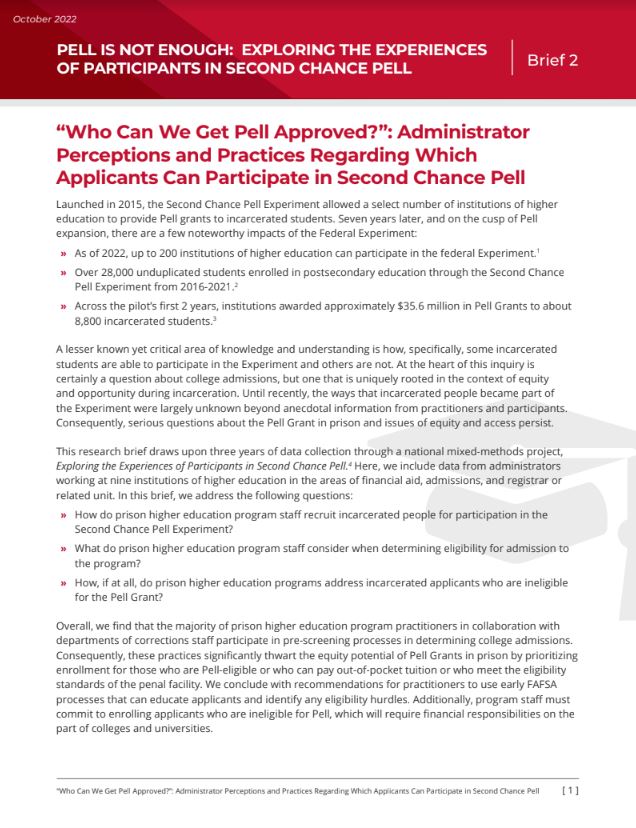“Who Can We Get Pell Approved?”: Administrator
Perceptions and Practices Regarding Which
Applicants Can Participate in Second Chance Pell
Author(s): Castro, E. L, Aguilar Padilla, E., & Gaskill, S.
Publisher: Research Collaborative on Higher Education in Prison
Year: 2022
Description
Launched in 2015, the Second Chance Pell Experiment allowed a select number of institutions
of higher
education to provide Pell grants to incarcerated students. Seven years later, and
on the cusp of Pell
expansion, there are a few noteworthy impacts of the Federal Experiment:
» As of 2022, up to 200 institutions of higher education can participate in the federal
Experiment.
» Over 28,000 unduplicated students enrolled in postsecondary education through the
Second Chance
Pell Experiment from 2016-2021.
» Across the pilot’s first 2 years, institutions awarded approximately $35.6 million
in Pell Grants to about
8,800 incarcerated students.
A lesser known yet critical area of knowledge and understanding is how, specifically,
some incarcerated
students are able to participate in the Experiment and others are not. At the heart
of this inquiry is
certainly a question about college admissions, but one that is uniquely rooted in
the context of equity
and opportunity during incarceration. Until recently, the ways that incarcerated people
became part of
the Experiment were largely unknown beyond anecdotal information from practitioners
and participants.
Consequently, serious questions about the Pell Grant in prison and issues of equity
and access persist.

